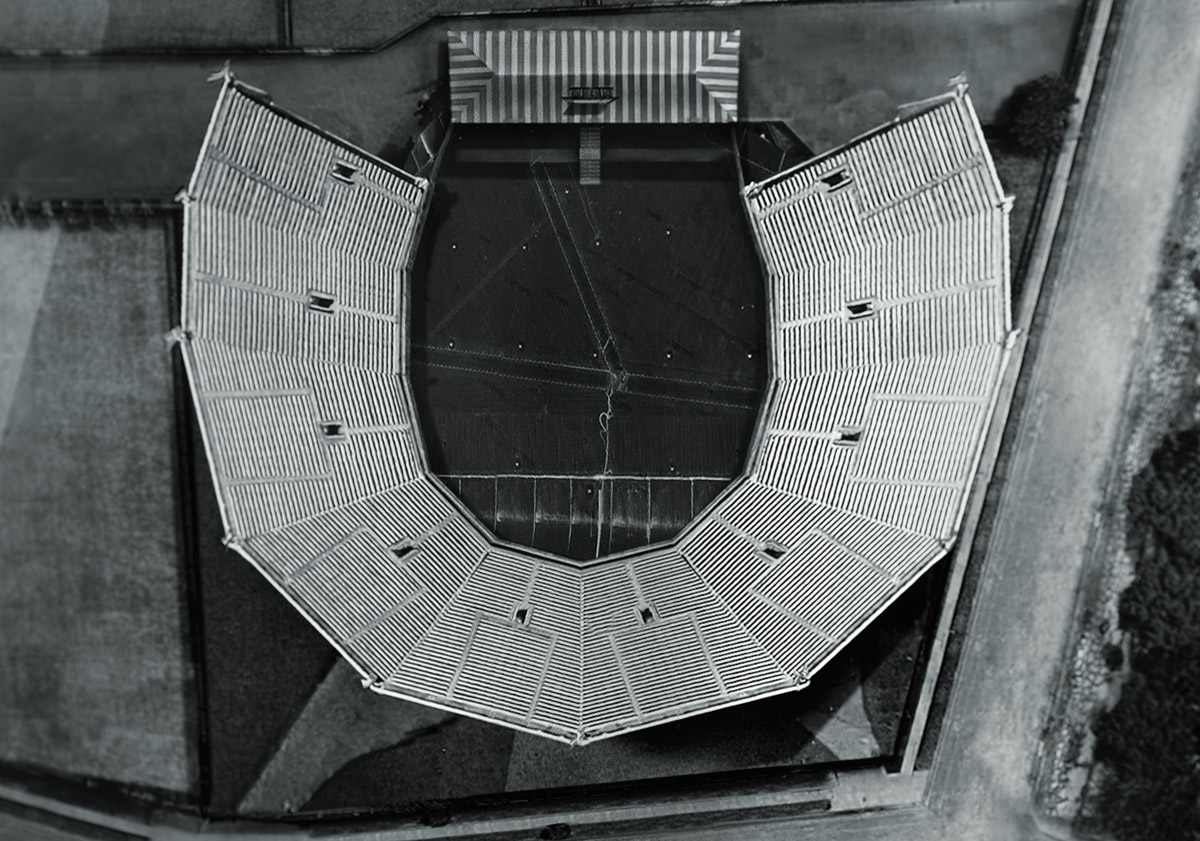In its sinister mode, it becomes a waking dream. It is a dream awoken with a bucket of steaming piss thrown into the viewer’s face with added cacophonous effect by the sound of mesmeric and distorted laughter.
By Brad Feuerhelm, ASX, January 2015
Bill Sullivan is a determined inquisitor of anachronistic practice. His work often transcends the easily understood directly into an obtuse discomfort of collective memory. He draws largely on the mechanism of photography for its ability to create familiarity, but his practice is a significant foray into painting and this is characterized by a fascinating subterfuge of both mediums. He is also able to systematically represent each of the twentieth centuries decades through the use of minutely specific appropriation of each era.
Sullivan is able to transmit an idea of place, people, or event from a decade or specific year by surgically investigating the year through images, yearbooks, and periodicals of the era to reproduce a chrono-specificity of time through his work. This is something worth discussing a bit more at length. An artist’s ability to take an era, year, or make a inquiry into aesthetics of a specific time from forty to ninety years before and turn this inquiry into an image that directly correlates the present viewer’s cultural and collective memory of that specific time and place is extraordinary. Further, to take that memory and tweak its image or meaning slightly is to promote a “disturbed nostalgia”, which is a talent that supersedes that of art into that of psychological dissent, a rare schism that oscillates between what is understood and what it is to be “understanding” within a body of work or a historical body of time.

To take that memory and tweak its image or meaning slightly is to promote a “disturbed nostalgia”, which is a talent that supersedes that of art into that of psychological dissent, a rare schism that oscillates between what is understood and what it is to be “understanding” within a body of work or a historical body of time.
Subsequently, in its sinister mode, the work becomes a waking dream. It is a dream awoken with a bucket of steaming piss thrown into the viewer’s face with added cacophonous effect by the sound of mesmeric and distorted laughter. That is not to say Sullivan’s work is constantly looking to haunt his audience. He leaves more questions than he enforces with answers, which is exactly why his methodology is effective. It leaves the viewer to haunt his/herself.
In Forest Hills, his stellar new catalogue of American tennis (yes, I know it doesn’t sound particularly haunting), Sullivan carries the weight of the uncanny through his practice with a focus on the history of Forest Hills, New York. Forest Hills was/is a sort of Sequestered American Sport get away for the international elite and for various U.S. Tennis Opens (never the universal sport). It is a place for those who enjoy the modernist penchant for the minimal grid of the tennis court. In Forest Hills, the participants throw their bodies on top of this court/grid in an intense effort to glorify their sport to that of gladiatorial effect. Screams of pain, gasps of ecstasy, sweat of gods and goddesses are all left on the court in equal measure. The supercilious nature of elitism and the hysteria of quasi-secret society/privileged tournaments have a toe hold on the courts of Forest Hills. In Forest Hills, former superstar tennis ghosts of the ages convene mercilessly to haunt the dreams of America’s future past.
The book is elegantly designed to reflect Sullivan’s interest in 20’s, and 30’s Bauhaus type and line by none other than Ofer Wolfberger of Horses Think Press. There is also a nod to another haunter of the American psyche, Justin James Reed, as spiritual advisor.
Sullivan is part of the SUN Editions publishing venture in New York, and the SUN people have spared no small amount of energy to work with exceptional talent and in doing so, have pushed Sullivan’s aesthetics and work to an exciting new place. Many people will likely see this as a simple, slightly weird book on tennis or at best photographic fascination, but the reality is that it is much more layered and complex on visual and conceptual fronts than it first seems.
One could spend time arguing a more soluble definition of this work. It could be that I want it to be more than a tennis book having no such affiliation to the sport or maybe it is just about painting and the pleasure of looking with a small interest in photographic appropriation. That would be fine, but I cannot help but feel there is a grand amount of unnerving subterfuge at play here and that maybe this is the power of the dream I am left with to unfold.
Forest Hills
Bill Sullivan
SUN Editions
(All rights reserved. Text @ Brad Feuerhelm and ASX. Images @ Bill Sullivan.)






